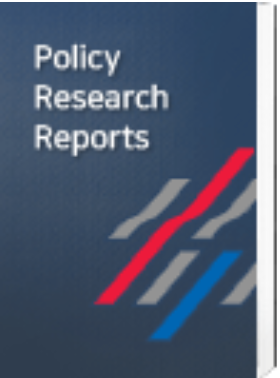Policy Report

RESEARCH
KOTI - Korea Transport institute
A study on the improvement of PPP policies for strengthening traffic safety:Focusing on the introduction of incentive systems for PPP highway projects
- Date
October 31 2022
- Page(s)
page(s)
#PPP
#PPP highway projects
#special purpose company
#availability payment

Due to the continuous promotion of public-private partnerships (PPPs) in the road sector, the role and proportion of PPP highways in the national highway network have been steadily increasing. Accordingly, concerns about traffic safety and the need for performance management are constantly being raised. However, the current PPP policies and related procedures are mainly oriented toward evaluating the efficiency of a project focusing on the planning and construction phases. Although institutional measures are also in place to evaluate the operational performance or to manage and supervise the maintenance level of PPP highway projects, there are insufficient incentives or penalties for their safety performance. To this end, this study proposes several safety-performance-based incentive systems suitable for PPP highway projects in Korea. Considering that most domestic PPP highway projects are based on the BTO model, one of the most feasible short-term measures is the extension of the concession period. Based on Article 25 (3) of the Act on Public-Private Partnerships in Infrastructure, it is possible to institutionalize this incentive system by evaluating the traffic safety performance over the existing concession period and extending the right to use and profit from the facility for free for a certain time period. Another short-term measure is to adjust the investment risk-sharing ratio every certain period in the BTO-a model. If the ratio is raised based on the safety performance, the government shares more risk, and the option value granted to the SPC (special purpose company) increases. The long-term plan for introducing an incentive system is to introduce the AP (availability payment) model, which is new in the PPP policy of Korea. The AP model being applied in many western countries evaluates the availability of the facility or service and the performance levels required by a government
or related authorities in a public sector, including safety. The government’s payment, which is the investment returns for the private investors, is granted according to the degree to which they are met. The AP model has a structure that can induce more detailed and effective improvement of safety performance compared to the short-term measures since it sets the availability of facilities and specific operational or maintenance criteria for individual items and deducts the payment according to the performance outcomes. The proposed incentive measures for the PPP highways can help increase the level of maintenance and operation of facilities so that road users can use safer PPP highways while providing economic incentives to SPC. For the public sector, it is expected that the government can build a solid foundation for revitalizing PPPs by reducing the public’s negative perception of PPP projects in the long term.
or related authorities in a public sector, including safety. The government’s payment, which is the investment returns for the private investors, is granted according to the degree to which they are met. The AP model has a structure that can induce more detailed and effective improvement of safety performance compared to the short-term measures since it sets the availability of facilities and specific operational or maintenance criteria for individual items and deducts the payment according to the performance outcomes. The proposed incentive measures for the PPP highways can help increase the level of maintenance and operation of facilities so that road users can use safer PPP highways while providing economic incentives to SPC. For the public sector, it is expected that the government can build a solid foundation for revitalizing PPPs by reducing the public’s negative perception of PPP projects in the long term.